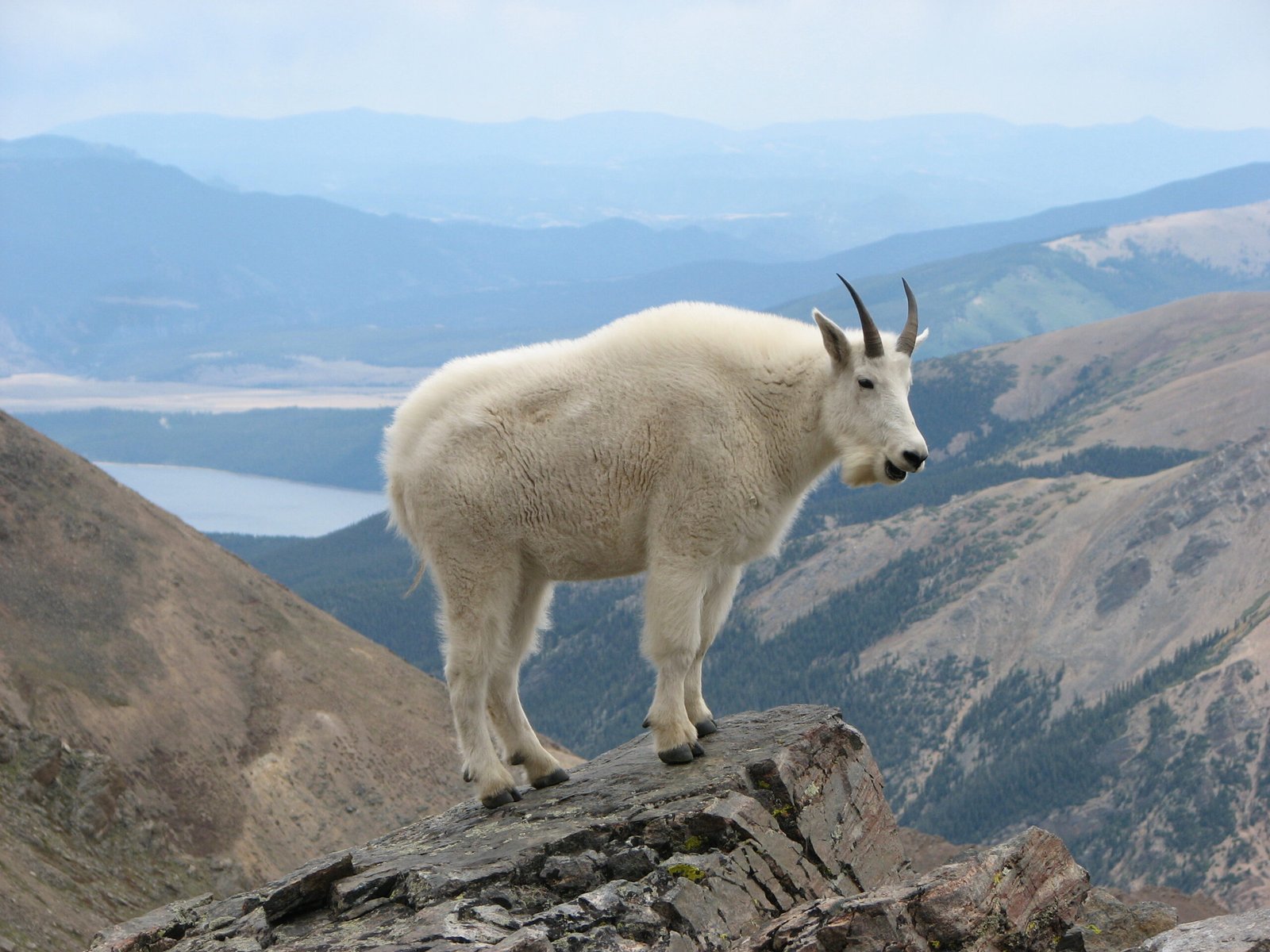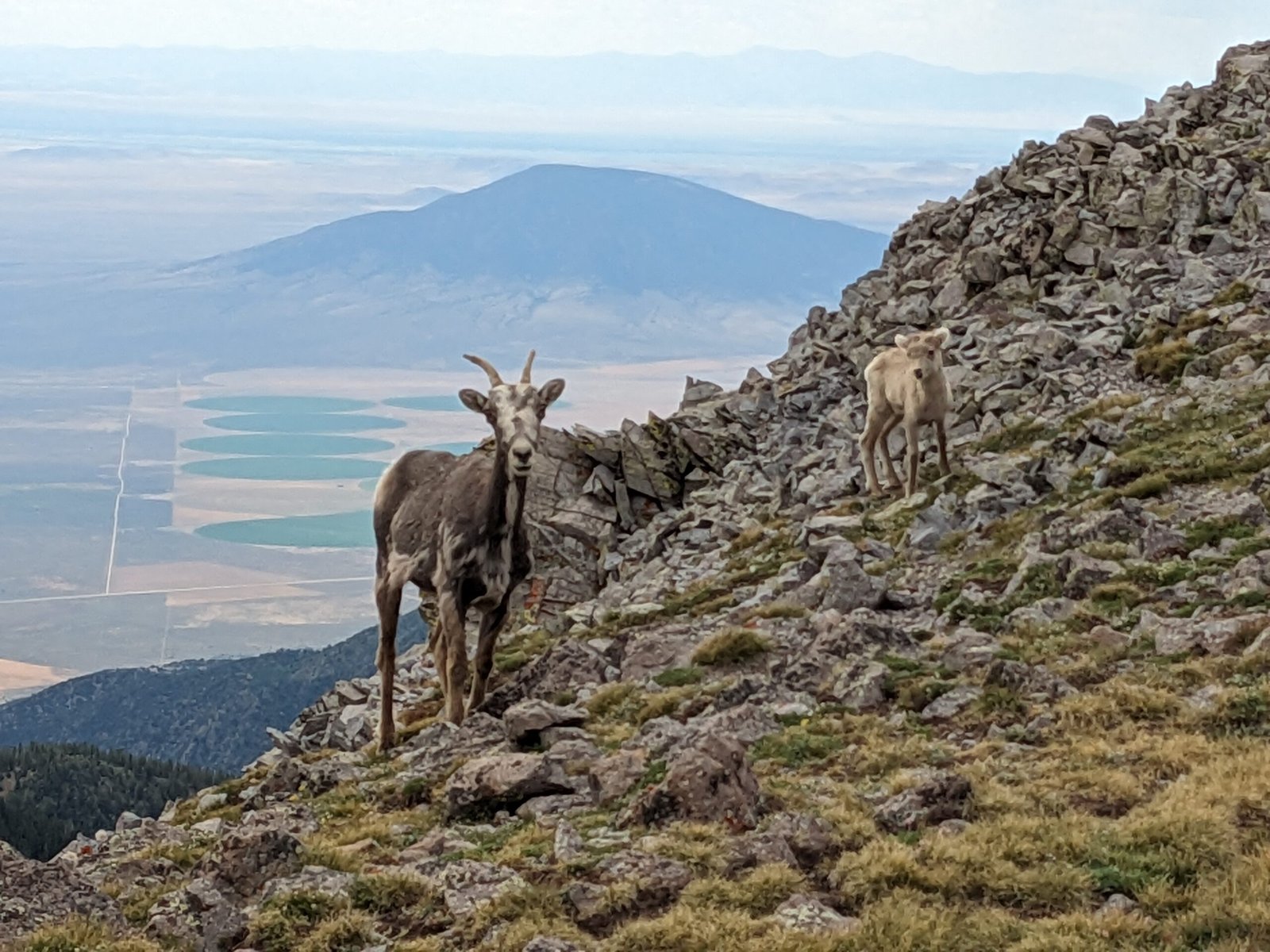Imagine standing at the base of a sheer concrete wall, craning your neck to see the top, and spotting a goat—yes, a goat—nonchalantly munching on moss halfway up the dizzying height. It almost sounds like the opening to a whimsical fairy tale, but it’s a real-life spectacle that unfolds in the Italian Alps. These daredevil goats, known as Alpine ibex, defy gravity and logic by scaling the vertical faces of massive dams as if they were gently rolling hills. Their jaw-dropping agility has baffled tourists, intrigued scientists, and sparked a sense of awe in anyone lucky enough to witness the scene. How do these seemingly ordinary creatures pull off such a remarkable feat, and what secrets lie behind their vertical adventures?
The Stars of the Show: Meet the Alpine Ibex
The main characters in this gravity-defying story are the Alpine ibex, a wild mountain goat species native to the steep and rocky regions of the European Alps. With their sturdy bodies, curved horns, and nimble movements, these goats are perfectly adapted for life in high altitudes where most animals would feel out of place. The males can weigh up to 120 kilograms, while females are a bit lighter, but both sexes share an impressive ability to navigate the trickiest cliffs with confidence. Over centuries, survival in such harsh environments has turned the Alpine ibex into an emblem of resilience and balance. Their presence atop craggy peaks or, more unexpectedly, vertical dams, showcases the marvels of evolution and animal adaptation.
Why Climb a Dam? The Surprising Reason Behind This Behavior

You might wonder why these goats would choose to scale a man-made dam instead of sticking to their familiar mountain slopes. The answer is both simple and fascinating: salt. The concrete surfaces of dams leach minerals, especially salt, which the goats desperately need for a healthy diet. In the wild, mineral deposits are hard to come by, so these clever climbers have learned to seek out alternative sources. By licking the dam walls, the ibex satisfy their cravings and supplement their nutrition in a way that would make any mountaineer jealous. This quirky quest for salt has led to some of the most spectacular wildlife scenes imaginable.
The Staggering Steepness: Scaling Walls at Impossible Angles

The Cingino Dam in northern Italy is perhaps the most famous stage for this natural performance. Its almost vertical face, rising over 50 meters into the air, is a daunting sight for any human. Yet, for the Alpine ibex, it’s just another playground. Watch footage or see photos, and you’ll find yourself holding your breath as goats, sometimes with tiny kids in tow, pick their way up the dam’s narrow ledges. The ledges are often no wider than a few centimeters—hardly more than a line drawn in stone. It’s not just the height that astounds, but also the sheer confidence and calm with which they move.
Anatomy of a Super Climber: What Makes the Ibex So Agile?
The Alpine ibex’s body is a masterpiece of evolutionary engineering. Their hooves are split and equipped with a hard outer rim and a soft, grippy center, almost like built-in climbing shoes. This gives them both traction and the ability to hook onto the tiniest protrusions in rock or concrete. Their powerful leg muscles allow for sudden leaps and precise adjustments, while a low center of gravity helps them stay balanced even on the narrowest surfaces. Unlike humans, who rely heavily on balance and caution, the ibex’s brain is wired to process rapid changes in footing, making slips extremely rare. Their eyes, placed high and wide on the head, provide panoramic vision to spot danger or find the next foothold.
Mother Nature’s Parkour Champions

If there was a parkour competition in the animal kingdom, the Alpine ibex would easily take the gold. Their ability to navigate vertical terrain is not just a party trick but a crucial survival skill. Predators like wolves or foxes are no match for the ibex on steep cliffs, where a single misstep could spell disaster for the pursuer. Even young kids, barely a few weeks old, follow their mothers up daunting slopes, learning the art of balance and movement almost as soon as they can walk. It’s a breathtaking reminder of how animals can adapt to their environment in the most astonishing ways.
Human Fascination: Viral Videos and Social Media Sensations
The sight of goats scaling vertical dam walls is so surreal that it has turned countless casual tourists into amateur filmmakers. Videos and photos of these gravity-defying creatures have spread across the internet, capturing the imagination of millions. People marvel at how the ibex seem to stroll up the dam as if out for a casual walk in the park. Comments range from disbelief to admiration, with viewers comparing the goats to climbers, superheroes, and acrobats. This viral fame has turned the Cingino Dam and its four-legged visitors into local celebrities, drawing nature enthusiasts and scientists alike.
The Science Behind the Spectacle

Researchers have taken a keen interest in the biomechanics of ibex climbing. Using high-speed cameras and motion analysis, scientists have studied the precise movements and strategies the goats use to stay safe. Their findings reveal a perfect blend of instinct, anatomy, and learned behavior. The ibex test each step before committing, shifting their weight gradually and using their horns and bodies for extra stability when needed. This scientific curiosity is not just about admiration; it could also have practical applications. For example, learning from the ibex’s climbing techniques might inspire improvements in climbing gear or even robotics, showing how nature often leads the way in innovation.
Ecological Impacts: More Than Just a Party Trick
On the surface, goats climbing dams might seem like a quirky sideshow, but it’s actually a testament to the complex interplay between wildlife and human infrastructure. The presence of ibex on dams highlights the importance of considering animal behavior in the design and placement of buildings, roads, and other structures. It also raises questions about how animals adapt to changing environments, especially as natural habitats shrink or shift due to climate change. The ibex’s adaptability is an encouraging sign, but it also reminds us of the need to protect wild spaces and ensure that animals have safe access to the resources they need.
Challenges and Dangers: Not Always a Walk in the Park
Despite their skill, climbing vertical dams is not without risks for the Alpine ibex. Slippery surfaces, sudden gusts of wind, or the presence of humans can all cause accidents. Although the ibex are experts in risk management, occasional falls do happen, sometimes with fatal consequences. Conservationists keep a close eye on populations near dams, ensuring that the benefits of salt access do not come at too high a cost. The spectacle of goats on dams is a thrilling reminder of nature’s ingenuity, but also of the fragile balance between curiosity and safety in the wild.
A Lesson in Resilience and Adaptation
The story of the Italian goats that climb vertical dams is more than just a viral oddity—it’s a powerful example of how animals find creative solutions in unexpected places. The Alpine ibex’s vertical adventures show us that survival often depends on flexibility, courage, and a willingness to try the improbable. Whether they’re scaling cliffs in search of food or navigating the concrete walls of a dam, these goats remind us that the natural world is full of surprises waiting to be discovered. Watching an ibex cling to a near-vertical wall, high above the ground, it’s hard not to feel inspired by their determination and grace.




